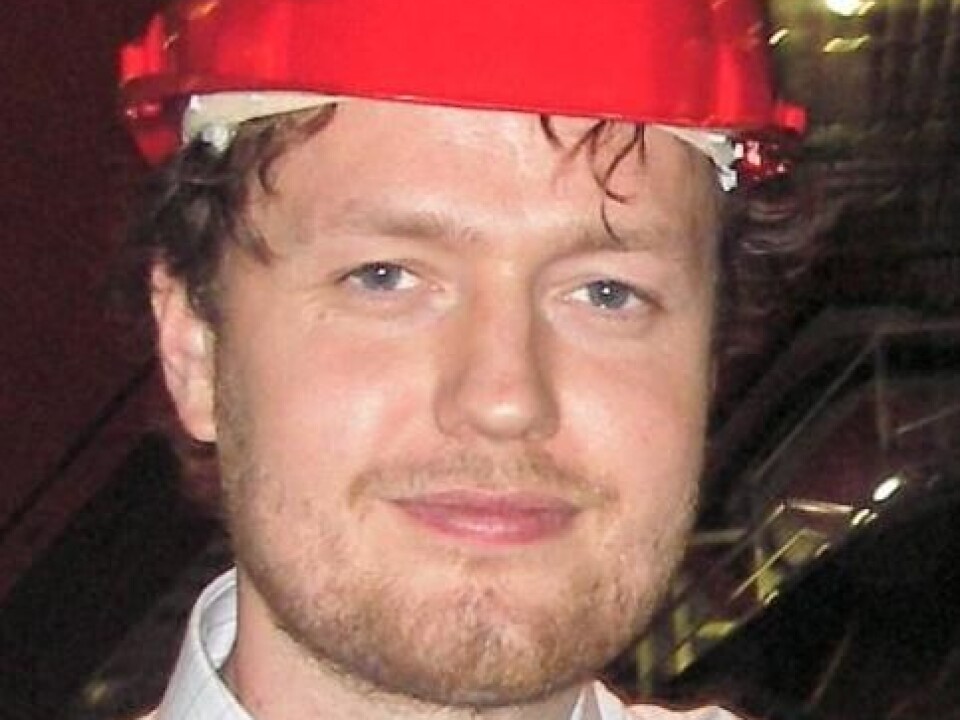
Time to accelerate collaboration with CERN
Basic research at CERN can have a huge impact on Norwegian firms if they seize opportunities to deliver technology. Twiddling thumbs won’t start the wheels of industry spinning.
Norway pays an annual membership fee as one of 20 member nations of CERN, the European Organization for Nuclear Research.
Comprised of several laboratories and facilities, CERN conducts cutting-edge research, especially of course in particle physics. Norway's annual membership fee is €13 million (NOK 100 million).
Countries pay to support pure research at CERN's labs in Switzerland and France – work that has included the probable observation of the elementary particle, the Higgs boson, last summer.
But membership also enables countries to gain more directly and immediately from the technology developed at these facilities.

CERN is constantly procuring products and solutions in its experiments and like other European corporations, Norwegian firms have good reasons to get in on tenders. The development of new products and technology will often result as a spin-off from these supplier contracts.
But Norwegians have been rather passive in this area. The Norwegian web page for CERN says : “In recent years Norwegian companies have not been that interested in offering their products to CERN and consequently, they have benefitted little.”
What needs to be done to turn that around?
In her doctoral thesis, Susanne Åberg at Uppsala University has looked at the ways Swedish firms have gained from collaborating with CERN.

“Companies that have delivered products and services to CERN a number of times are satisfied. It’s not so much a question of monetary gains, but rather what they have learned, either about their own products or the sales process,” she says.
“The major gains are not from the general transfer of knowledge. What companies need are long-term relationships.”
Selling services or gaining technology
Companies in Norway, Sweden or the other member countries can gain from CERN’s technology developments in two ways:
One is by winning a bid to deliver a product or service needed by CERN. This can be anything from fibre-optic cables and electronics that are resistant to radiation to more mundane matters like providing security guard services or office supplies.
Some of these are products a company already has in its range, and these can be sold as is. Other needs can be so specific that the company must develop entirely new solutions, in collaboration with scientists and engineers at CERN.
The second way enterprises can gain from CERN collaboration involves its Technology Transfer Office.
CERN is publically financed and has lofty aims, so few of its solutions and technologies are patented. Potential users can hunt through CERN's databases for technological solutions that might answer their needs.
Unexpected benefits
Åberg has most faith in the first variety of knowledge exchange. She interviewed 15 Swedish companies that have collaborated with CERN in one way or another.
“Companies can get real benefits from working with CERN and providing supplies, but the effect is created by interaction over a period of time,” she says.
These success stories often follow a classic pattern. Benefits pop up in areas the firms had never expected.
“I’ve paid particular attention to a subsidiary of Ericsson, as well as ABB. Ericsson developed something rather new for CERN, a new type of fibre-optic cable. They explained that in the course of their collaboration they learned novel things about their own products from CERN’s technicians,” says Åberg.
ABB, on the other hand, supplied a guidance system the company had already fully developed. So Åberg expected them to learn less from their contract than Ericsson did.
“Nevertheless, the person I talked to at ABB claimed that CERN knew more about the specific market ABB did, because they had communicated with competitors when soliciting tenders,” she says.
“Among other things, CERN employees knew more than ABB about the plans of companies that make products which can be connected to ABB’s guidance system. This enabled ABB to predict market developments and improve its product in light of these insights.”
Technology transfer is a dry run
Åberg has less faith in the department that coordinates the transfer of technology in a more general way. She says too much time and energy is often wasted hunting around in databases to make it worth the time it requires.
“The biggest marketing effort in promoting industrial collaboration is focused on the technology transfer itself, but that isn’t what gives the main result. It’s sort of a dry run; success depends on a number of factors,” she points out.
“The right person has to find just the right call for proposals, and it really has to relate directly to what the company does. Sure, this happens sometimes, but I don’t think this is where the permanent relationships are created.”
Contact personnel
It’s often the tiny cogs that count, even in a big machine.
Åberg’s analysis shows that the Industrial Liaison Officer (ILO) from the member countries' companies is the key person in helping companies compete.
ILOs are tasked with finding CERN technologies that their nation’s business and industry can use and also with finding domestic companies that stand a chance of winning procurement contracts.
“In lots of cases success can be attributed to this contact person. When countries like Sweden and Finland have had a highly capable liaison officer we see these countries have won a larger share of contracts,” says Åberg.
In this connection CERN classifies members in two categories. A country is well balanced if its business and industry wins contracts that are proportional to its national membership fees. A country is considered underbalanced if gets too little back for the dues it pays.
“In the late 1990s when Sweden had a very successful industrial contact, the country was designated as well balanced,” says Åberg.
Norway loses on prices
Ole Petter Nordahl is the Norwegian ILO at CERN. He says that elbow grease and timing are not the only things that matter when it comes to CERN.
“Norwegian enterprises are highly competent and should therefore be well equipped to deliver goods and services to CERN. But the distance to Switzerland and France can be a disadvantage, and then we have our challenges with regard to comparative price levels,” he says.
“We are out of step with the rest of Europe when it comes to pricing. It’s so costly to produce things in Norway that it’s hard to be competitive, especially if the delivery involves hours of human labour.”
Still, despite the highest general wages in Europe, Norway has won a lot of contracts in recent years, even though it is not in the well-balanced group. Nordahl points out that only four of the 20 member countries are in that fortunate category.
“Norwegian concerns have been a lot more active the last few years. Clearly we would like to see more collaboration between CERN and Norwegian firms. But the blame has to be mainly pinned to our cost levels, rather than other Norwegian failings or something attributable to CERN,” he says.
He also thinks that technology transfer functions better than the impression often given in a general network forum.
“I agree that the general forum doesn’t work so well. But in the past few years a lot of smaller forums and seminars have been developed to target specific trades where industry, researchers and CERN employees participate. My experience is that this can work well,” he says.
--------------------------------------
Read the Norwegian version of this article at forskning.no
Translated by: Glenn Ostling








